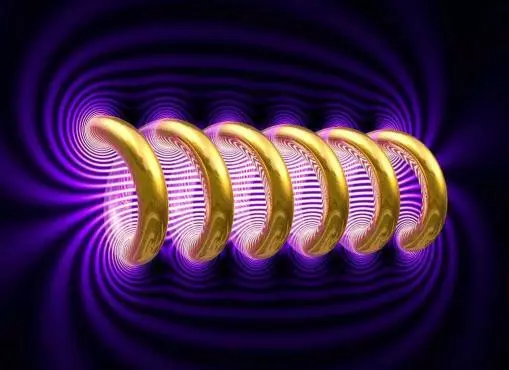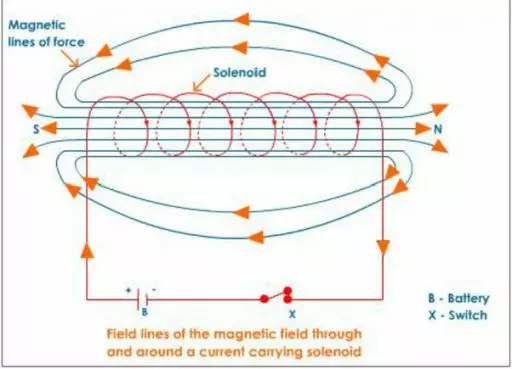Induction Annealing Applications & Equipment
Induction Heating for Annealing is heating metal in order to soften it in preparation for forming or forging, for instance, heating a bar of just about any type of metal until it is soft, and then bending it. With Induction Heating and using a well-designed coil, it’s also possible to heat just an area of the metal without heating the rest of the workpiece, a process called Selective Heating.
Induction Forging in a way is a type of annealing where you heat the metal to a particular temperature just before melting it for shaping it into a desired shape, like a screw head or a bolt. If you don’t anneal the material to the required temperature, the material may crack as you try to form it. You may not see the crack visually, but it will be there on a micro-scalar level.
Titanium Ti-6AL-4V type material for Forging: If you wish to heat a Titanium slug or a billet at high Temperatures into a desired shape, you may have to blow Argon on the slug during the heating process to minimize the unwanted alpha form – scaling – that can develop across the surface of the material during the heating process. For more details, see Vacuum Annealing below.
Another example of trying to form metal without heating is using a Forming Die to Forge metal. If you try that without heating it to the required temperature first, you will ruin your die.
One of our customers in the aerospace industry does a lot of annealing/forging in order to build parts for aerospace and for bridges. In their case, the material is titanium and non-magnetic stainless steel, which they first anneal, i.e. soften, and then forge into fasteners in their proprietary shape.
Annealing is also used for softening a portion of a metal, for instance Brass, to soften it for an application such as Crimping.
Materials that can be formed after annealing include:
- Copper
- Brass
- Titanium
- Magnetic and Non-Magnetic Steel
- Aluminum
- Nickel Alloys
- And many others.
Annealing is based on the correct amount of output power in kW and even frequency in order to get the desired heat penetration needed to affectively heat the metal prior to forming it.
For heating materials that are ¼” or more, we recommend the SA80 series high performance Induction Heating System. The SA80, like no other Induction Heater on the market today, has dynamic on-the-fly self-tuning. This means that the induction generator can adapt itself to your specific induction heating coil and material requirement with no manual intervention – the operator does not have to open the generator and change any Transformer and or Inductor capacitor values.
The SA80 also features an Auto Learn function, which allows the system to remember and recall all of your internal recipes (power/time/temperature) for each part that you anneal. Together with the Auto Tune feature, the SA80 allows you to easily create and reliably replicate your successful, repeatable and consistent results time after time.
The Auto Learn feature is particularly useful when you want to use the same induction heater to anneal parts of different materials. We can often provide a one- or two-coil solution, which, combined with Auto Learn, enables our customers to use the same induction generator with different coils. For fast turnaround on part changes, simply switch coils and recall the correct part settings from the easy-to-use interface.
Vacuum Annealing
Some materials don’t react to well to oxygen during the annealing process. The material oxidizes due to its specific properties. For instance, some nickel-based materials, such as 200 series super alloys, have to be heated to target temps of about 2100 to 2300 degrees F for annealing. When you heat them to this high a temperature, they develop ugly tarnishing and scaling. There are a few ways to handle this:
1) Blow argon toward the material to purge oxygen before beginning the annealing process. For instance, place your wire material inside a quartz tube, blow argon into the area to purge oxygen, then heat the material to the target temperature;
2) Anneal the material in a vacuum chamber.
Materials that would benefit from vacuum annealing include materials such as Stainless Steel 3 or 4L, 316L, 17-4PH types.
We can design and manufacture a complete manual, semi-automatic, or fully automatic vacuum annealing solution to fit your needs. The solution doesn’t need to be complicated – to keep things simple, in an open-air environment, place your workpiece in a quartz tube, wrap an induction coil around the tube, and you’re ready to start annealing.
Induction Offers Key Advantages over Flame Torch
- No open flames and fumes, no more need for storing and using Oxy-Acetylene torches or storing flammable gas tanks. Induction is clean, flameless, safe.
- Localized heating: Precise “useful” heat can be focused only to the required joints to be brazed.
- Consistency & Repeatability: All annealed parts have heat applied evenly, and the annealing results are repeatable.
- Automation: Feeders, scanners, heating – all can be automated with cost-effectively.
- Quick/Instant On features make induction energy and cost-efficient.
- Can be done in a vacuum/atmosphere for a nice clean finish – no post-cleaning required.
- Using our optional Master Controller V3+, you can control for Power and Temperature, or Power and Net Heating Time Presets for each braze joint diameter. Use the Controller’s “Quick Access” menu to pull up all the Presets for required braze joints prior to the day’s production run.
Try our free calculator
Check out our Induction Heating Calculator for running basic calculations to help you size your induction heating applications.
Why choose induction technology solutions?
Free Application Testing & Demos Available
Large In-Stock Inventory for Fast Lead Times
Lower Cost & Increase Productivity with Automation
Personable Customer Service



